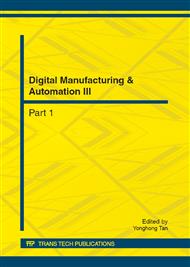p.222
p.227
p.232
p.237
p.241
p.245
p.249
p.253
p.257
A New Approach to Battery Capacity Prediction Based on Hybrid ARMA and ANN Model
Abstract:
Research on battery prognostics and health monitoring (PHM) is important in many engineering areas, and battery capacity is a good indicator of battery condition, this paper introduces a new approach to predict battery capacity use hybrid ARMA and ANN model. First, two time series forecast models ARMA and ANN are introduced, since these two models have their own shortcoming in forecasting nonlinear and linear time series respectively, hybrid ARMA and ANN model are established in order to combine both advantage of the two and get more precise prediction result. Then capacity data applied in this paper is described, prediction results and errors based on these data and among three models are compared. At last, the conclusion that hybrid model shows the best performance and will provide a new approach to realize battery capacity predictor is given.
Info:
Periodical:
Pages:
241-244
Citation:
Online since:
July 2012
Authors:
Price:
Сopyright:
© 2012 Trans Tech Publications Ltd. All Rights Reserved
Share:
Citation:


